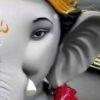By Ramakant
At a recent family dinner, one of my older (and louder) uncles downed an entire whiskey glass in his hand before particularizing the state of the nation. "The biggest problem with the country is these news anchors on TV. For the sake of a few bloody rating points, these channels create mountains out of mole-hills", he boldly expounded and continued. In another corner of the same room, I winced quietly at this generalisation. This wasn't the first time someone shared a similar sentiment. There is no comparison between the sedate newsreaders of yesteryear with the current crop. However, I was uncomfortable at his ire being directed elsewhere.
As per my uncle, TV channels have compromised on their quality to pander to the gallery. For want of more "TRP" or "Television Rating Points". His outburst got me thinking for the next few days.
When did the word "ratings" start such becoming a negative word? Why does a section of individuals feel that "ratings" are a bad thing?
As an employee of a multinational TV broadcasting company, I have the privilege of being witness to the use of ratings within the business. We are required us to pay close attention to these numbers since it forms the measurement basis of two key components - viewership & advertisers. In reality, it translates into a series of mundane and cold calculation that is the daily work of so many office-goers. So what's the fuss all about?
Let's begin with the basics.
Media researchers globally use a variety of tools to understand how home viewers are watching television. By using a combination of multiple qualitative and quantitative research methodologies, researchers gauge the reasons behind the popularity (or lack of it) among the designated target audience. Over the course of time, the Indian TV industry has come to accept a ratings system that measures the media habits of a small representative sample which extrapolates it to a larger audience. Although a layman would squirm at that thought of a tiny fraction of the country deciding for the rest, statisticians would vouch for the confidence levels arising out of a sufficiently representative sample size. Set-top boxes specially built by the ratings company are installed in these houses that relays back information about the viewing patterns of the family.

Ratings are critical to the functioning of the television business which follows an advertiser-funded model. Sponsors are interested in converting viewers and buy airtime (advertising revenue) that allows them maximum coverage for their potential customers. Thus the rating numbers binds the broadcaster in a never ending dance between audiences & advertisers.
In the first chapter of her book "Indian Television in the New Millennium", Prof. Shoma Munshi draws parallel with the growth of television sales and the quality of the fictional shows. Shows on DD such as Hum Log & Buniyaad (1986) were popular as the "middle class viewers, especially those who faced the traumas of partition, could identify with the characters of the show". By the early 90s there were a wave of progressive shows such as Hasratein & Tara "that told stories of extra-marital affairs and went down fine with urban audiences". The author concludes that since TV owners at that time lived mostly in the big cities, the shows catered purely to their tastes. However, with the growth of low-cost TV sets in the coming decade, a new section of audiences were realised by the broadcasters. While she stops short of mentioning it, the truth is that the ratings system helped them discover hitherto unknown geographies. As the broadcasters spread themselves deeper into the hinterland, they quickly adapted their content to appeal to the larger base. All this, while measuring their audiences with updated ratings technologies.
In India, practically a single company had a monopolistic hold on generating TV ratings - TAM or Television Audience Measurement. TAM India is a joint venture between two major market research firms -Nielsen (India) Pvt. Ltd. & Kantar Media Research. In the almost twenty years that TAM has been in existence, it turned into the de facto currency that the entire media & advertising industry began to trade in. However, TAM's dominance was always a matter of debate. TAM has been defending its methodologies against criticism from broadcasters since 2002, including a two month investigation report by Outlook. However, TAM's reputation received a body blow in 2012 when the popular news network NDTV filed a billion-dollar lawsuit against the ratings agency claiming among other things that there was "rampant manipulation of viewership data has been going on for eight years, and when presented with evidence earlier this year, top executives at Nielsen pledged to make changes. But the Indian news giant says these promises have been false ones." The courts have yet to resolve this argument. But the damage to the agency's reputation was already done. Slowly and steadily, more voices joined in tocomplain against the TV ratings system with some of the broadcasters threatening to end their support.
Industry expert Vanita Kohli attributes the failure of the ratings agency to the hyper-competition within the broadcasting space. In 2005, there were around 350 TV channels and by 2012 that number doubled to 700 channels. In spite of its best efforts, TAM's sample was considered inadequate to measure 148 million homes. Niche channels (such as English Entertainment and News genres) observed weird variations while measuring viewership in their small audience sets and it became extremely difficult to believe in the accuracy of these numbers.
All this while, parallel developments were taking place in the corridors of the Ministry of Information & Broadcasting. Numerous complaints about a creaky ratings mechanism forced them to take a stand on the matter. What could the government do at a time like this?
Imagine a cricket tournament being played by fiercely warring players. Halfway through the tournament the teams notice the field umpire either being shoddy or suspect him of being biased. The tournament organisers appreciate this problem but stop short of changing the umpire lest they be criticised for overstepping their duty. Instead of cancelling the tournament, the players decide to chip in their collective resources and elect a neutral person who will be accountable to each of the teams.
This in a nutshell is the origin story of BARC - Broadcast Audience Research Council. And this tectonic shift will reshape the entire television space from hereon.
When faced with the inexplicable riddle of TV ratings, the media industry took one of its boldest and forward-thinking decisions. The industry bodies collectively decided to trade short-term gains for a much longer goal of building a sustainable measurement system. To achieve this task they selected the brightest minds from amongst themselves to create a Joint Industry Body on the lines of BARC in UK. In this process they built an extremely cost-effective solution committed to complete transparency with the sole objective of measuring "what India watches".
There are numerous advantages of the new ratings system (BARC) over the previous on (TAM). For starters, BARC is a not-for-profit organisation built from within the industry while TAM still remains a privately-held research agency. Secondly, BARC uses better cost-effective technology that will begin with 20,000 meters and allow scaling up to 50,000 meters in a few years while TAM is currently at just 9,000 meters thus overcoming the niggling doubt about insufficient sample size. Third and critical to its reputation is the promise of transparency. BARC considers itself more of a coordinating agency between 25+ vendors who individually have access to a certain link in the ratings process. In other words, it is practically impossible for one entity to infiltrate or corrupt the data across the entire cycle.
By the time you read this, BARC would have already released its first set of ratings that will begin the shift towards a new currency. The tension is palpable as it marks the end of almost a three-year long wait since the BARC took inception.
Will the introduction of BARC make any difference to my uncle with the whiskey glass?
This is not an easy question to answer because the impact is yet to be felt before we can judge its ramifications. But one can safely assume that my uncle would not notice any change on his TV screen in the short term. The entire TV space (broadcasters, advertisers & media agencies) will take necessary steps to ensure that business not get hurt while moving to a new currency. However, in the long run this system can throw up interesting possibilities. Over the course of next few years, it may be possible to being measuring content on HD screens and DVRs giving a peak into habits of the coveted premium audiences. At the same time, BARC is also expected to throw light on TV consumption in rural India as well which has been neglected all these years. Understanding these habits forms the first step in identifying potential business opportunities and thus ultimately leads to creating content that caters to the specific needs. BARC promises to also monitor video on mobiles, tablets and out-of-home screens as well thus help in building a bridge to the elusive "second screen".
In my humble opinion, one of the enduring steps BARC can take is to simplify the usage of ratings for the fans and admirers of TV shows similar to the popular blog "TV By The Numbers" that catalogues ratings across shows. In a similar veinShailesh Kapoor recommends, BARC could open up bureaus that offer services with licensed data. This will help in unlocking the viewing patterns to a larger in interested group
Edited by Jyothi.N - 8 years ago



















comment:
p_commentcount